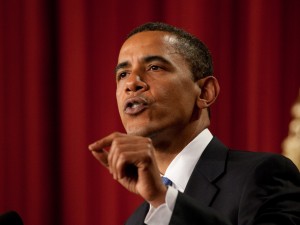By Flannery Winchester
Each month, Citizens’ Climate Lobby hosts an international call featuring a guest speaker to educate listeners on topics related to climate change and our Carbon Fee and Dividend proposal.
The guest speaker for March 2017 was Devashree Saha from the Brookings Institution. She joined our March call to explain the concept of decoupling the economy and CO2 emissions.
What is decoupling?
Historically, economic growth has come hand in hand with higher greenhouse gas emissions. It’s pretty logical: more human activity results in more emissions from that activity. That means drops in emissions have historically come as a result of economic recession or depression. The concept of decoupling strikes at the heart of that assumption: economic growth and increased carbon dioxide emissions don’t have to be linked. “In recent years, more and more data confirm that it is actually possible to address global climate challenges while preserving economic growth and prosperity,” Saha said. We can see that trend globally on the first graph she shared:
“In 2014, the International Energy Agency reported that energy-related CO2 emissions stayed flat, despite an increase of around 3% in global GDP,” Devashree explained. “So actually for the first time in 40 years, there was a reduction in carbon emissions that was not tied to an economic crisis.” The trend continued in 2015.
Saha broke the numbers down further, showing graphs of more than 20 countries who, between 2000 and 2014, have reduced their annual GHG emissions while growing their economies. The list includes many countries across Europe, including the United Kingdom, which has dropped emissions by 20% but grown their economy by 27%.
Decoupling in the US
The U.S. is also on that list, and has experienced a few notable periods of decoupling. Notice the graph from 2000 to 2001, from 2005 to 2006, from 2010 to 2012, and in 2015. All show emissions dropping while the economy grows.
“Emissions decoupling in the United States has clearly become more and more frequent,” Saha explained. We can see that even more obviously when these numbers are broken down at the state level. Between 2000 and 2014, 33 states and the District of Columbia have expanded their economies while reducing their emissions. Here are the ones from that group that Saha considers “high decouplers”:
“These are states which actually achieved significant reduction in carbon emissions while achieving double digit economic growth,” except Maine, Saha pointed out, but it’s considered a high decoupler because of its dramatic emissions reductions.
As part of the Metropolitan Policy Program at the Brookings Institution, Saha focuses her work on cities and metropolitan areas. “Cities, metro areas, and increasingly, states are the subnational entities where the rubber really meets the road,” Saha said. “States are the entities that set state-level carbon emissions goals and renewable targets. They regulate investor-owned electric utilities. They shape land-use rules and building codes and transportation systems. So it’s very safe to say that progress to meet national targets is going to depend heavily on state and local policy.” With the right policy choices, states can continue these trends of growth while reducing emissions.
Keeping up the momentum
“There’s still a very big gap between where we are as a nation and what is actually needed to meet the two degree Celsius target” set by the Paris agreement, Saha said. On average, global carbon intensity has been falling at a rate of 1.3% per year. At that rate, we’ll have spent our carbon budget by 2036 and will blow past those two degrees of warming. To stay within the two degree Celsius global carbon budget, our global decarbonisation rate needs to be 6.3% every year through 2100. So the positive trend of decoupling needs to continue—and ramp up even more—to achieve our goals.
Hear Devashree Saha’s full remarks on our March 2017 call here, and follow the Brookings Institution on Twitter at @BrookingsInst.






